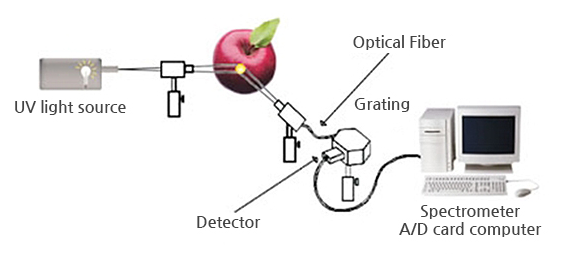When pesticide residues present in agricultural products or food or harmful substances added during processing are ingested more than the allowable amount, it can cause fatal damage to the human body. Especially, most of them are accumulated in the body without being discharged outside the body.
Currently, methods such as HPLC or GC-MASS are used to measure the components and concentrations of residual pesticides. However, since the detection method is complicated and specialized knowledge is required, an analyst capable of professional experimentation is required. It takes 1 to 2 days for the test result to come out, which is unsuitable for agricultural products that are fresh. Also, most of these days, test results come out after shipment, so it is mostly useless. In addition, expensive inspection equipment must be used, and it is very expensive to inspect the entire agricultural products consumed at the time of one inspection.
Recently, there has been a growing interest in the safety of agri-food products with the improvement of people’s lives, and the importation of foreign agricultural and marine products due to liberalization has been increasing. Therefore, a technology for accurately and quickly detecting pesticide residues and harmful components is highly required. As interest is growing, it is becoming a promising core technology. LifeNtech is under research at the commercialization stage through continuous research and development on the rapid detection technology of residual pesticides and harmful ingredients using spectroscopic technology.
Measurement Principle
The method of detecting residual pesticides and harmful components is to apply ultraviolet rays to specific components and to use the principle of generating fluorescence by absorbing ultraviolet rays of a specific wavelength band. Most pesticides contain a pi conjugation system that can easily absorb light energy in the visible or ultraviolet region, resulting in electron transfer, which emits fluorescence according to the physicochemical properties of the molecule. Therefore, fluorescence occurs in different areas depending on each pesticide, so it is possible to measure residual pesticide of agricultural products by measuring it.

Device Overview & Application Process
In general, the UV light source that supplies light to the sample, the sample holder that can hold the sample, and the optical fiber that transmits the light to the detector, consists of a spectrometer (Spectrometer A/D card Based computer) and a spectrometer (grating) that processes spectra by wavelength. Fluorescence is very weak compared to transmitted or reflected light. Therefore, it is necessary to construct a structure to obtain fluorescence only by transmitting the influence of transmitted light or reflected light. To analyze the acquired data, a high level of spectral analysis technology is required. LIfNtech is under continuous research and development based on the world’s best non-destructive sorting technology.
